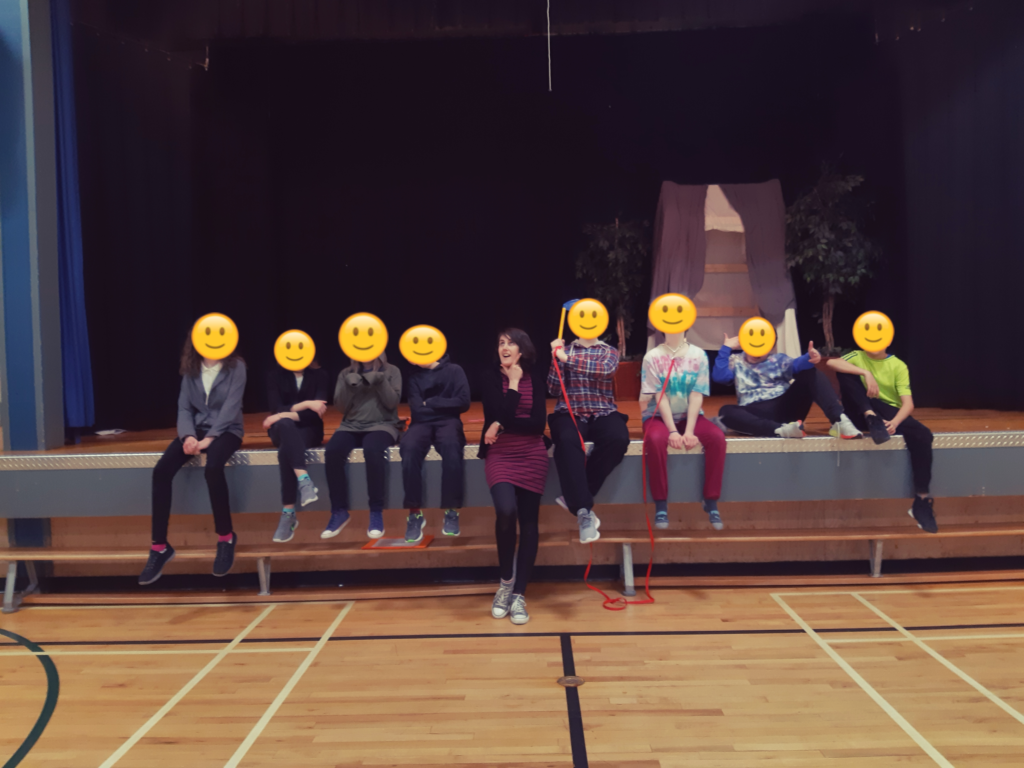For a change, I would like to shift from talking about B ed practicums and instead speak about my experience teaching an after-school drama program. I applied to the After-school Sports and Arts Initiative back in September 2020 and when asked which subject I would like to teach, I decided drama on the spot. I had never formally taught this, I was just excited about it. I designed an 8-week program that was full of fun ice-breakers, creative movement, improvisation and ended in a half-hour drama production. I even wrote the play! By the middle of the first class, I realized I was a little in over my head. The participants came from diverse backgrounds, had differing abilities that required several accommodations, many were dealing or had dealt with severe trauma, some had questions about gender and identity. I knew I had committed to this program, so I was definitely committed to creating an inclusive environment for everyone, and drama would bring us all together.
Much of creating an inclusive environment came down to flexibility. I observed which direction participants wanted to take their program and allowed them to have ownership over it. After every class, we made time for a closing circle where each and every person was responsible for giving and receiving at least one piece of positive feedback from the session. A simple act like this created a common ground for everyone to meet, it allowed for a little vulnerability and provided peer validation, that is so necessary, to feel included. As much as teachers would like to believe that being accepting and inclusive themselves is sufficient, it is as important, if not more so, to create an environment where these sentiments are felt among peers.
A resource that helped me delve deeper into inclusion is SOGI education. I had several students questioning their gender identity or orientation and I wanted to be as prepared as possible, should they want to share something sensitive with me. I felt honoured when intermediate students would approach me and let me know what they were feeling and how they would like to be referred to. It is an immense privilege to watch children grow into the adults they will one day become, to be a step in their journey.
Once the initial 8-week session came to an end, students who had developed a love for the drama and the equalizing effects it cane have, were keen to join again. I was overjoyed to further the relationships we had built in the program’s first installation and aimed to make the second one even better. Below is a picture taken directly after our fully-recorded drama production “A journey to Nowhere-land” where students auditioned for roles, practiced lines, designed their own costumes and created stage effects. Quite the accomplishment for a group that had next to no previous drama experience!

What is Inclusive Education? – From Inclusion BC
https://inclusionbc.org/our-resources/what-is-inclusive-education/
Inclusive Education Resources – BC Ministry of Education
https://www2.gov.bc.ca/gov/content/education-training/k-12/teach/teaching-tools/inclusive-education
Special Education Policy Manual PDF – BC Ministry of Education
https://www2.gov.bc.ca/gov/content/education-training/k-12/teach/teaching-tools/inclusive-education
Teachers of Inclusive Education (TIE) – British Columbia
http://www.tiebc.com/
